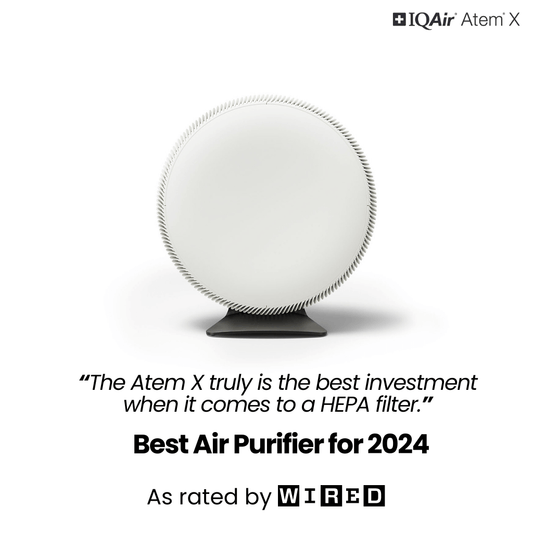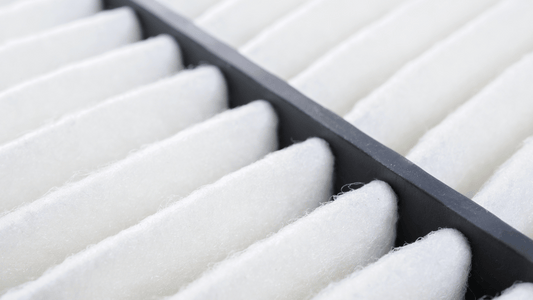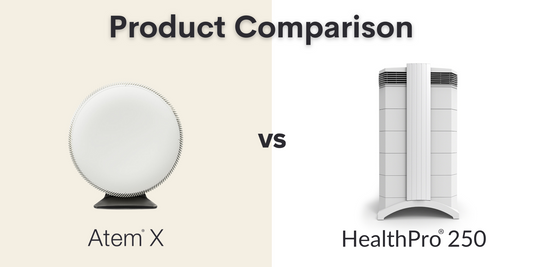Air purification technologies have made many advances since the first air purifiers and especially HEPA air purifiers were developed as a tool in nuclear technology in the 1940s. But how much has air purification improved since then?
There are now many different types of air purification technologies that are being marketed today and, although the range on offer is confusing if you know what to look for you should find an air purifier to meet your needs. Whether to ease the symptoms of Multiple Chemical Sensitivity or Sick Building Syndrome or to protect a child with allergies or asthma.
Air purification technologies can be classified according to whether they are intended to remove particulate pollution (house dust mite corpses and faeces, mould spores, pollen grains and dust particles, for example) or gaseous pollution (cigarette smoke, nitrogen oxides, formaldehyde, for instance).
Mechanical air purification traps particles on some kind of mat or filter after drawing air into the machine. The best-known type of mechanical air purification is the HEPA filter which is made of submicron glass fibres and traps particles by three different mechanisms (each acting on a different size range of particles). The best HEPA filters trap near on 100 per cent of particles down to 0.03 microns and below in size.
Electronic air purification technology uses electrostatic attraction to trap particles. There are two kinds of electronic air purification technologies. The electrostatic precipitator sucks air into it where particles are charged and attracted to plates within the machine that has the opposite charge. The ion generator (or ioniser) works by ionising the air so that charged particles then stick to surfaces like walls or curtains, or collide with other particles and sink to the floor. Be aware that some ionizers produce ozone which is itself a powerful pollutant, affecting the lungs. Furthermore, filters will have to be changed on time in order to prevent a dip in filtration efficiency.
If it is gaseous pollution you wish to remove from indoor air, then there are a number of so-called gas phase filtration systems available. Each tends to remove one or more, but not all, types of gaseous pollutant. These devices work either by adsorption or by chemisorptions. In adsorption, the gaseous pollutant sticks onto an adsorbent surface, such as activated charcoal, silica gel, activated alumina or a clay mineral. In chemisorption, the gaseous pollutant molecules actually react chemically with substances present in the sorbent surface and are broken down into harmless substances like water and carbon dioxide.
The final type of air purification technology relies upon actually deactivating or destroying the pollutant rather than trapping it (technically, chemisorptions might fall into this category). Ultraviolet Germicidal Irradiation air purifiers use ultraviolet light from lower pressure mercury vapour lamps to sterilise the air of biological pollutants such as mould spores and bacteria (but not viruses – and some moulds and bacteria are resistant, except to higher UV exposures than are usual with this type of air purifier). Then there are photocatalytic oxidation cleaners which use ultraviolet light plus a catalyst (often titanium dioxide) to convert organic gaseous pollutants into carbon dioxide and water. This is still a developing and emerging technology and often UV light is only used as a gimmick in air purifiers. The air passes through the unit too quickly for bacteria to be destroyed by shining a regular UV light on it for a fraction of a second (you want to expose bacteria for several hours to UV not fractions of a second).
Besides the air purification technology involved, there are various other questions to consider when purchasing an air purifier, such as its actual filtration efficiency (the units should be leakage free), performance characteristics, cost, ease of maintenance and operating level of noise. So the question, which is the best air purifier for different your particular needs, has to be carefully be considered.




